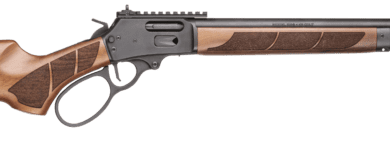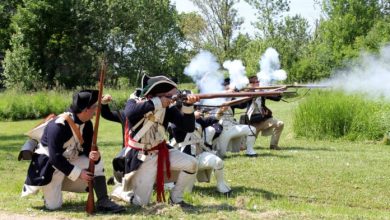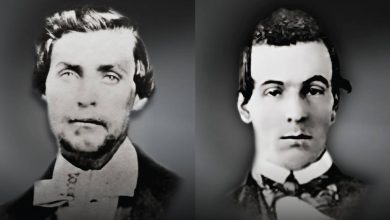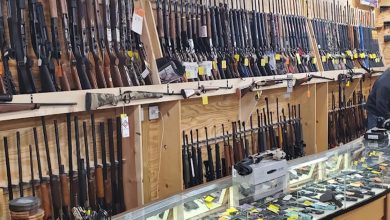Obscure Object of Desire: The S&W I Frame Terrier
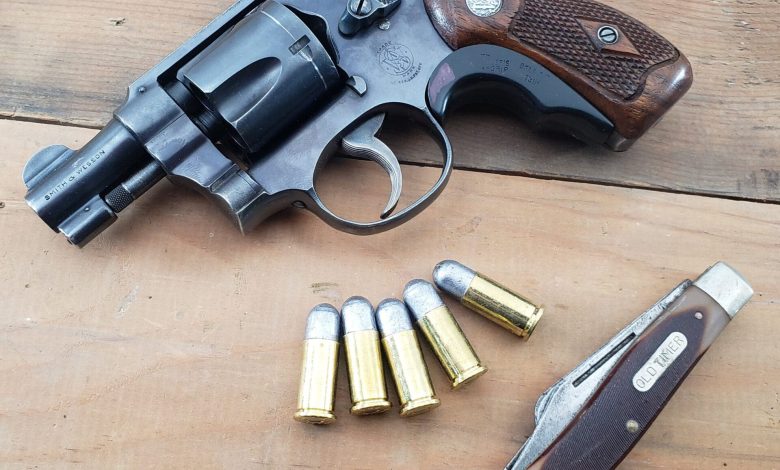
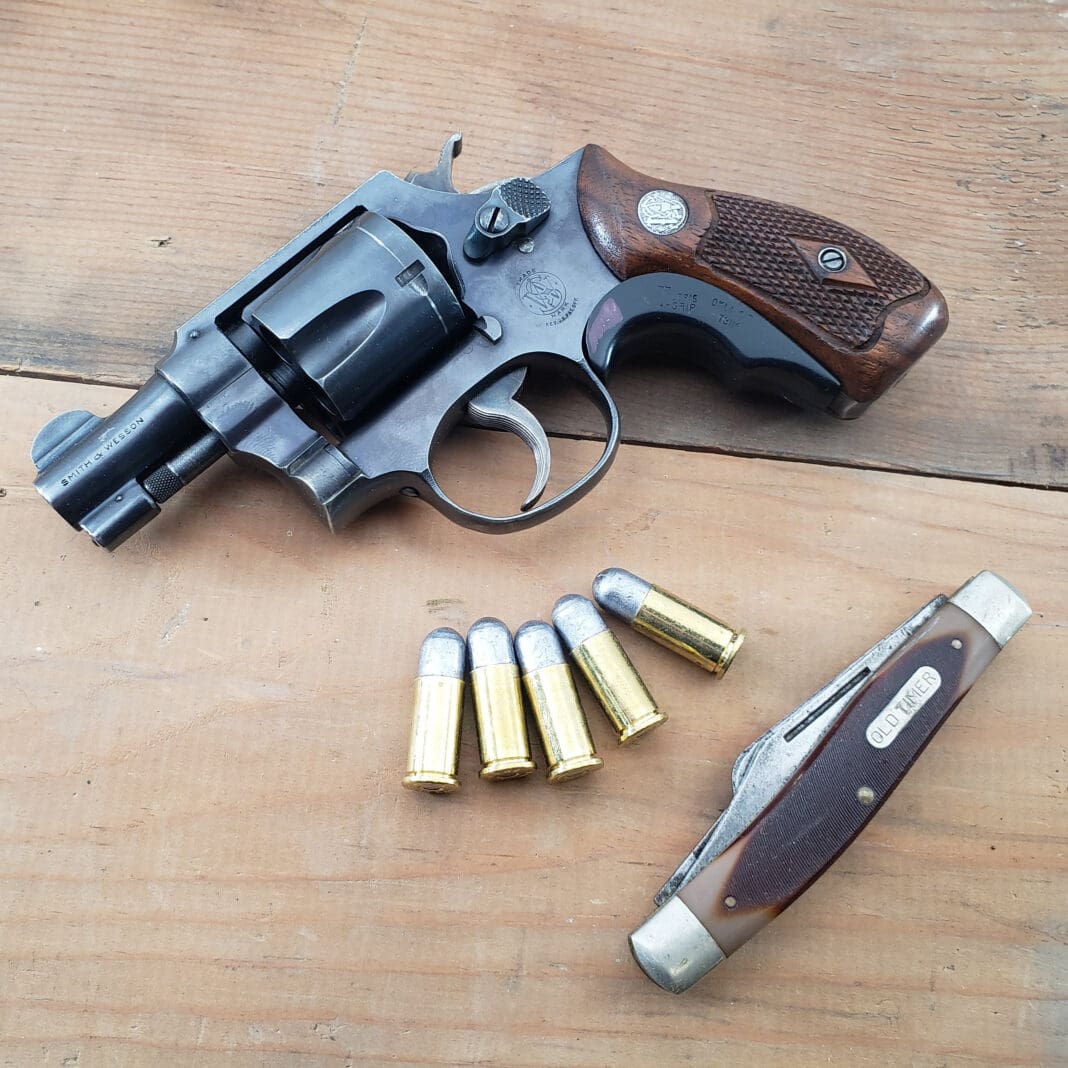
I’ve always liked snub nosed revolvers. There’s a certain mystique to them that goes back to old private eye and detective shows. Plus, they’re still a pretty compact carry gun, and remain popular even well into the 21st Century. I’ve owned a few over the years and the only one I’ve kept is my 3-inch Ruger SP-101 in .357 Magnum, and I don’t totally count that with its 3-inch tube. I kept getting drawn to them though and at one point decided that if I was going to get another one I should give in to that old detective story appeal and get an old one.
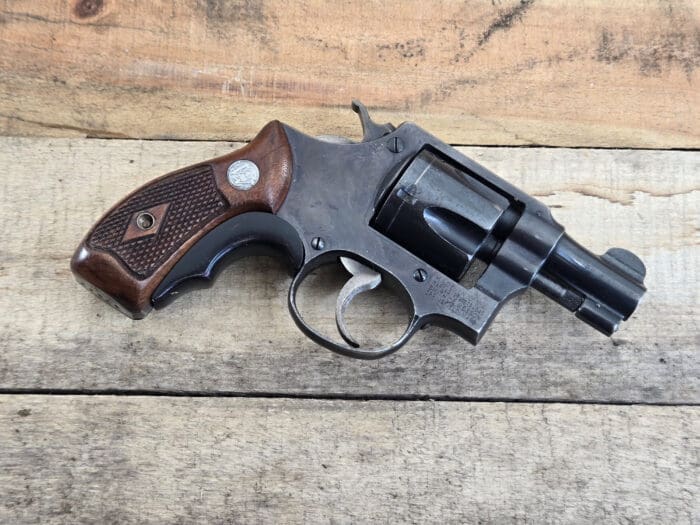
There’s No I in Team, but There Is in Terrier
When I started looking around, I initially was looking at pre-60s Smith & Wessons and Colts. I knew this was mainly going to be a novelty gun for me so I didn’t want to spend a ton on it. In my head the .38 Special is the quintessential snubby round, but when I started looking at older guns I found that wasn’t always the case. .38 S&W was quite popular even into the 1960s and so was .32 S&W Long. I also found that guns in those chamberings are apparently less desirable, and the prices reflect that. I imagine it’s a combination of the facts that ammo can be harder and more expensive to find for those calibers, and that modern defense ammo isn’t commonly available. That makes sense, but for my desire to have a classic to take to the range once in a while that wasn’t an issue. Plus, I was already shooting other guns in both calibers so I wasn’t adding anything new to the ammo cabinet.
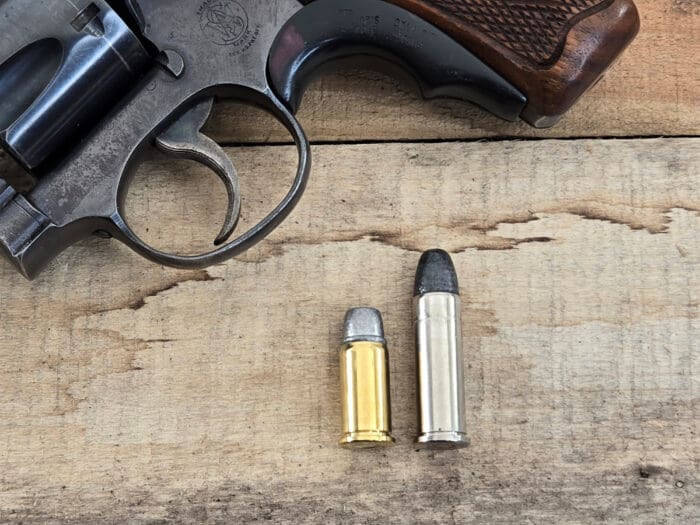

Older Colt snubbies, even in .32 or .38 S&W still seem to command a decent price and don’t seem to be quite as common as Smith & Wessons in those calibers. I found a fair number of Smiths available, usually on the Terrier platform. The Terrier was Smith & Wesson’s nomenclature before moving to model numbers in the late 50’s. The Terrier models were small frame, 5-shot revolvers in either .32 S&W Long or .38 S&W. Barrel lengths ran from 2 to 4 inches, but 2-inch ones were what I was looking for. So, a small frame with Smith & Wesson means a J frame right? Yes, that’s true, but that wasn’t the only small frame that Smith offered. In looking at these older guns I found that while some Terriers, and the later Model 30, 31, 32 and 33’s were in fact built on J frames, the early ones used an even smaller I frame.
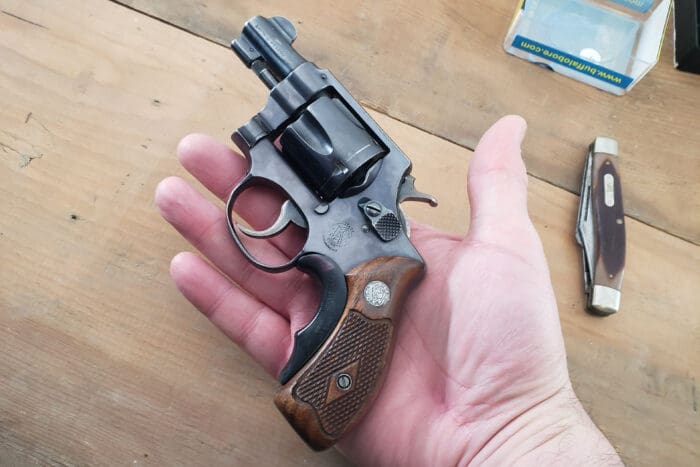

The I’s Have it
So what is the I frame? Basically it’s a compact frame just a little smaller than a J frame. It was first used with the Hand Ejector series way back in 1896, and holds five rounds of .38 S&W and six rounds of .32 Long. The cylinder and cylinder frame window are shorter than the J frame and would not accommodate the .38 Special, which is why the J frame was later developed. The grip dimensions are slightly smaller as well. Although the J did eventually replace the I frame, both were made concurrently for a while. There was also a transitional model that had a longer cylinder and frame window to accept the .38 Special but still had an I frame grip. These were called the “Baby J” or Baby Chief” by collectors.
Once I learned about the I frame, I decided it was enough of an oddball in this day and age that it was just what I needed. Plus, for my interest in a pre 60’s snub nose it was perfect. While less known now, the I frame would have been quite common for the time.
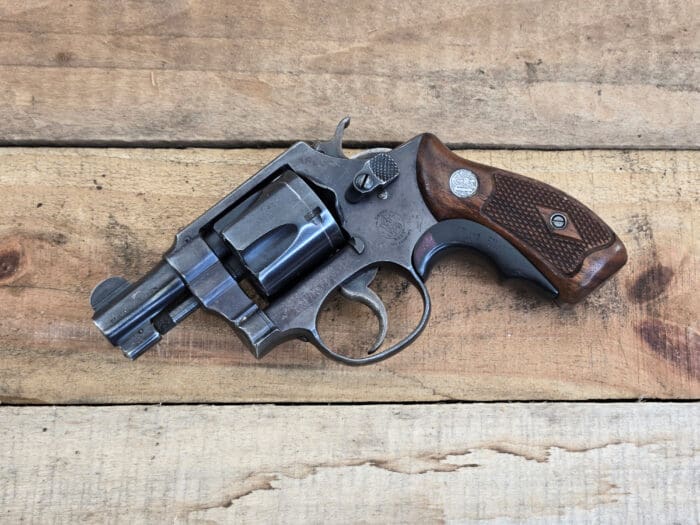

My Terrier
I ended up finding a nice Terrier in .38 S&W on Gunbroker. It’s in what would be classified as Very Good condition, with a bit of holster wear at the muzzle. It had a set of nicely checkered original grips and an added bonus of an aluminum Tyler T grip. It was under $400, so not dirt cheap but a lot less than a current snubby from Smith, and most importantly, it was exactly what I was looking for.
When I picked the gun up from my local shop and pulled it out of the box (just a shipping box, it didn’t have the original box) I knew I’d made the right choice. The blued finish, checkered walnut grips, the rounded front sight all screamed 1940s or 50s. The lockup was solid and the action was great. Smooth, either from hands on attention to detail when it was made, or from wear from use.
The gun was definitely used, but not abused, and well maintained. Maybe it was the carry gun of a private eye or police detective? It could have sat in the drawer of a shop keep or in someone’s nightstand, too, but I’d like to think that the addition of the T grip indicated it was owned by someone who used the gun, rather than just stashed it away “just in case.”
My Terrier is a 5-screw model with a coil main spring, which makes it post World War II. Between the features and the serial number it was made somewhere between 1948 and 1953 when Smith started making the 4-screw, “Improved I Frame” model.
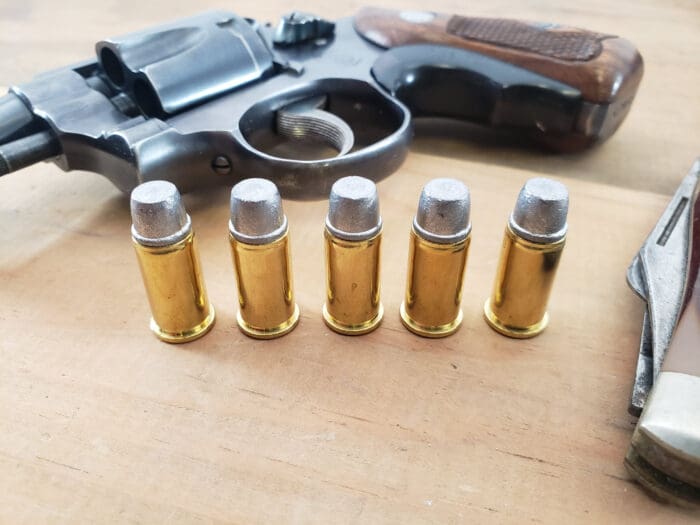

Punching Holes
At this point I probably should be giving you a range report with test targets and chrono data, but honestly I never did any of that. I’ve had the gun for years at this point and never set out to do a review of it, considering what it is. I’ve casually shot the Terrier at full size silhouette targets at 5, 7 and 15 yards from standing positions, both with my primary hand and offhand, and mostly in double action. I never seriously tracked group sizes, and didn’t chronograph anything.
I used a mix of various brands of 148-grain lead round nose rounds from my ammo locker, as well as some Steinel Ammunition’s .38/200 load that I use in my MK IV Webleys. The 148s are pleasant to shoot and work their way down range at somewhere around 650 fps depending on the brand. The Steinel uses a heavy 200-grain bullet chugging along at a sedate 540 fps. You might not be able to outrun it, but it’d be close. The heavy 200-grain bullet hits with a lot more authority than the 148s though, especially on steel.
My gut was to use the 200s, which were much like the old .38 S&W New Police loads from back in the day. While they shoot great in my Webleys though, the little Terrier didn’t like them nearly as well. They shot well off from point of aim and didn’t group that well out of the 2-inch barrel. The 148s shot pretty much to point of aim, and I could cover five-round groups with the palm of my hand out to about 15 yards. Further out than that and all bets were off, although that’s likely just my skill, or lack thereof, with a snubby revolver.
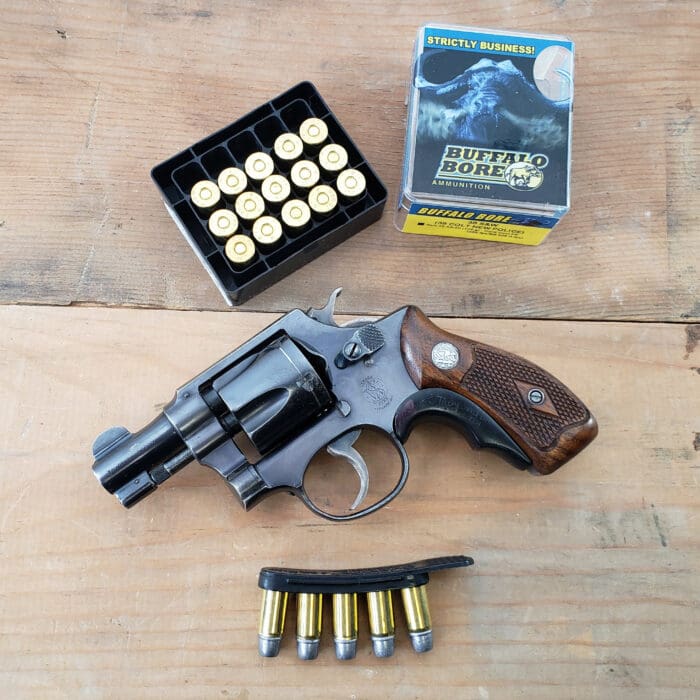

I had one last load to try though and this one proved a winner all the way around: the Buffalo Bore 125-grain Hard Cast Flat Nose .38 S&W, coming out at a comparatively screaming 1,000 fps out of a 2-inch barrel. The Buffalo Bore round was designed to give all of these older revolvers out there some punch, and it does that. The 125-grain hard cast lead bullet at 1,000 is creeping up on a 124-grain 9mm, and on par with many companies’ .38 Special 125-grain +P loads. While the other .38 S&W loads are pretty pleasant to shoot this one’s a bit of a thumper. It feels like you’re shooting a +P load out of a snub revolver. The 125s surprised me by shooting point of aim at 7 and 15 yards. Groups were actually the tightest of anything I shot. I wasn’t measuring as I wasn’t really planning on writing this up, but I’d guess about 3 inches for double-action groups, standing offhand. I’m calling that good enough for government work.
Buffalo Bore also makes a similar load for the .32 S&W Long for folks that still have those floating around as well. It’s worth noting though that these are much more powerful than most other ammo companies .38 S&W or .32 Long offerings. Buffalo Bore cautions against using them in old break top .38s and .32s or older solid-frame revolvers that may have been made for blackpowder loads initially. I’d probably add in the myriad of Spanish Smith and Colt clones that used to be common in the 20s and 30s to that caution list as well.
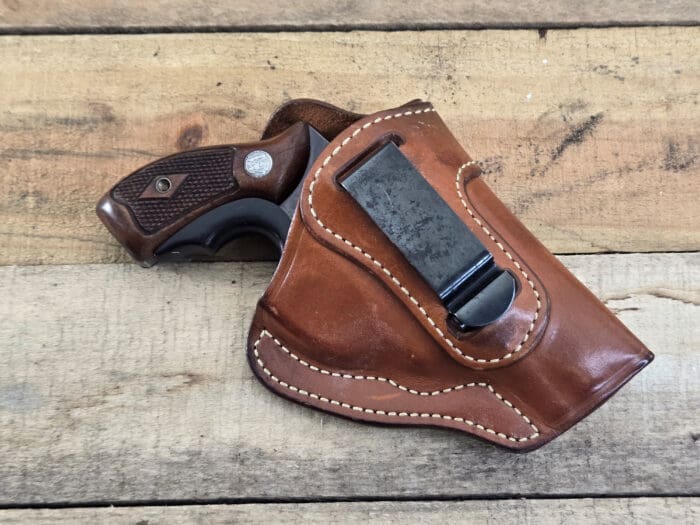

Holsters and Grips
Even though I was unlikely to carry my Terrier, I still wanted leather for it, just in case. Finding I frame holsters wasn’t easy, but eventually I stumbled upon an Italian-made, inside-the-waistband model listed for an I frame on Ebay. Perfect! I jumped on it and anxiously awaited its arrival. When I got it, it seemed to fit well enough, but when I looked closer at the stamping, I saw that it was really a J frame holster. I don’t fault the seller, the stamp did look like it could be an I rather than a J. Still, my lesson learned was that the I and J are so close that you can use J frame holsters without issue. I ended up picking up a Bianchi 9R upside down shoulder rig shortly after that as well, just because I always wanted one, and now had a gun that would fit it.
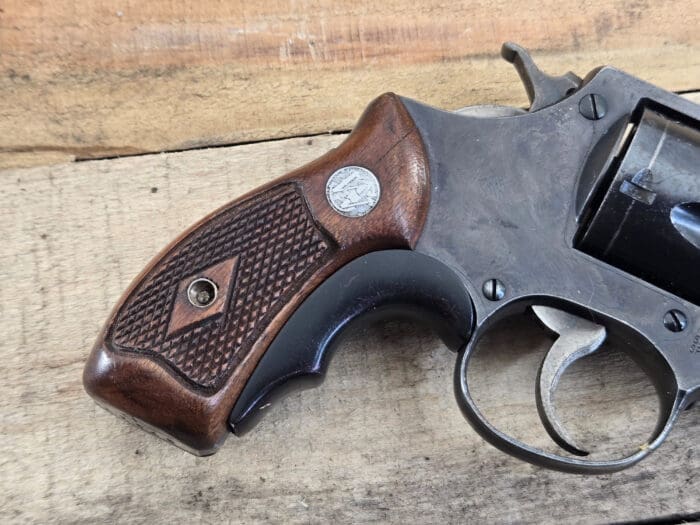

Now, the same reciprocity between I and J frames can not be said for grips. I had a set of old butterscotch Micarta Tyler Tru-Fit grips for a J frame that I thought I could use on the Terrier. I liked the wood it came with, but wanted to use the Tyler’s so I gave them a try. I found out for sure that the I frame is different. It’s shorter, and J frame grips do not line up correctly. So if you need replacement grips, then you would need to find I frame specific ones.
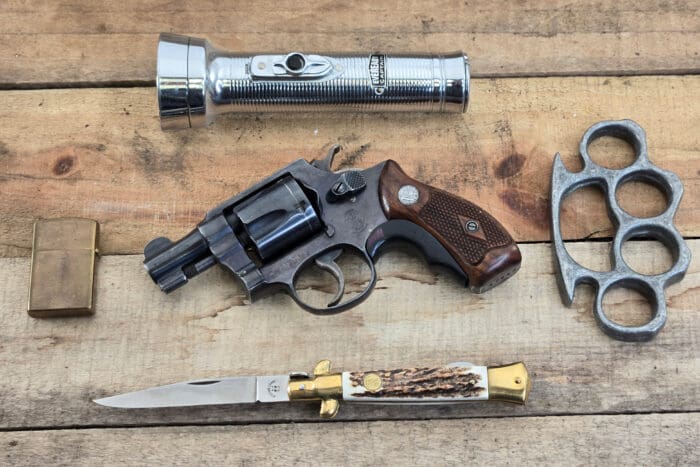

What is it Good For?
So, what is an I frame in .38 S&W good for these days? Well, it’s a solid, quality made revolver, with a good trigger. With those Buffalo Bore loads it potentially could be a viable defense gun even today. With that said, I have plenty of other carry options so it probably isn’t going to fill that role. For me, it’s mostly nostalgia. It scratches an itch for a classic wheel gun with some fun mystique around it. That’s honestly good enough for me. It’s a neat little gun, with interesting history, and being an I frame rather than a J frame makes it a little quirkier, which I like. As a retired police detective, I like that connection as well. I carried a .40 S&W Glock 27 during most of my time in plain clothes, but I imagine if I was working in the 40s or 50s something like the Terrier might well have been what I would have used.
I’ve become kind of enamored with the platform now and would love to get a .32 Long Terrier, and maybe a 4-inch square butt Regulation Police as well. I won’t likely carry those either, but they’ll be fun ones to take to the range now and then.
Need Ammo? Check out Ammo To Go, the ammunition retail sponsor of TTAG gun reviews and simply a cool online place to fulfill all your ammo needs.
Read the full article here

